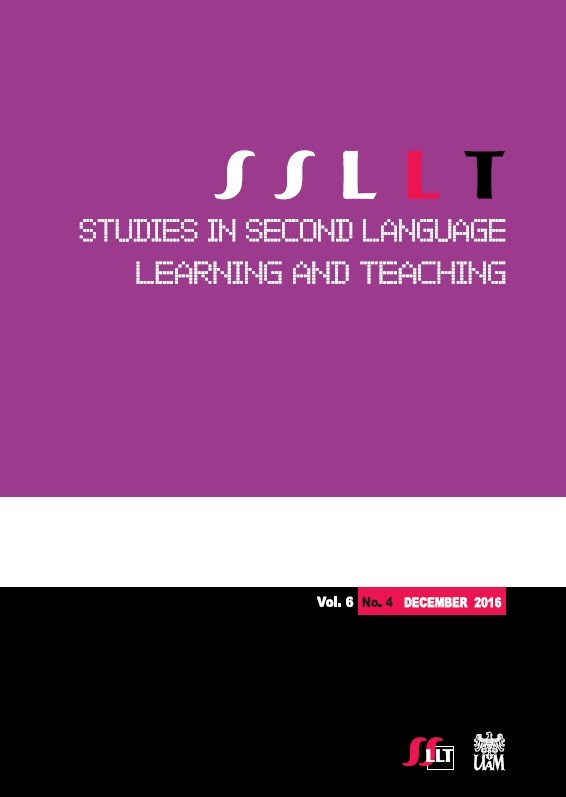The teaching of pragmatics by native and nonnative language teachers: What they know and what they report doing
The teaching of pragmatics by native and nonnative language teachers: What they know and what they report doing
Author(s): Andrew D. CohenSubject(s): Language and Literature Studies, Foreign languages learning
Published by: Uniwersytet Adama Mickiewicza
Keywords: native teachers (NTs) and nonnative teachers (NNTs); L2 vs. FL pragmatics; pragmalinguistics; sociopragmatics
Summary/Abstract: The paper focuses on how nonnative teachers of a target language (NNTs) deal with pragmatics in their classes. It starts with a discussion of what pragmatics entails. Next, issues relating to the teaching of pragmatics are identified, such as the language background of the teacher, comparisons between second- (L2)and foreign-language (FL) instruction, and the potential role of digital media and other means in providing models for pragmatic behavior. Then, an international survey is presented which probed into the experiences of NNTs of various languages while teaching the pragmatics of their language of instruction. A total of113 teachers were asked to indicate what they taught with regard to pragmatics,30 native-language teachers (NTs) and 83 NNTs. They were also asked to report on their experience as teachers of L2 and FL pragmatics (e.g., if they encountered classroom moments when they did not feel like an authority on some aspect of pragmatics, what they did about it). Since pragmatics is a meeting of language and culture, the teacher respondents were asked to assess their knowledge regarding pragmalinguistics (i.e., the language forms) and sociopragmatics (sociocultural knowledge). In addition, they were asked to give their opinion regarding similarities and differences between the teaching of FL as opposed to L2 pragmatics, as this traditional dichotomy gives way to a more hybrid reality in an increasingly globalized world. Similarly, they were asked about their methods for teaching pragmatics (e.g., their use of digital media and their handling of dialect differences). Finally, they were asked to suggest areas in which they would like to see research conducted that would inform the teaching of pragmatics. The paper reports the findings from the study, including statistical differences in reported teaching of criticism, sarcasm, and cursing, as well as in the use of digital media and in having students gather data on pragmatics.
Journal: Studies in Second Language Learning and Teaching
- Issue Year: VI/2016
- Issue No: 4
- Page Range: 561-585
- Page Count: 25
- Language: English

